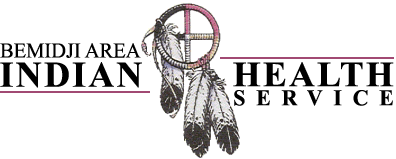| IHS Area Offices |
Welcome to the BEMIDJI AREA of the Indian Health Service The Bemidji Area Office (BAO) of the Indian Health Service (IHS) is located in Bemidji, Minnesota. It provides health care and funding to support health services for American Indians and Alaska Natives residing in five states with tribal facilities in Minnesota, Wisconsin, Michigan and Indiana; and urban centers in Minnesota, Wisconsin, Michigan, and Illinois. Currently, there are 34 federally recognized tribes in the BAO geographical area, with more tribes seeking recognition by the federal government. Ojibwe (Chippewa) Indians are the most numerous of the 34 tribes served by the Bemidji Area. Still occupying areas today, where they earlier settled, are the Ottawa, Potawatomi, Menominee, Ho-Chunk, and Sioux. Only the Oneida, a member of the Iroquois of upstate New York, and the Stockbridge-Munsee Mohican Band (originally from Massachusetts) were resettled in the area from greater distances. Most of the land is heavily glaciated and remains forested as part of forested lowlands. Some of the nation's record low temperatures and some of the record snowfalls are recorded in these northern places.
The Bemidji Area Office (BAO) of the Indian Health Service (IHS) is located in Bemidji, Minnesota. It provides health care and funding to support health services for American Indians and Alaska Natives residing in five states with tribal facilities in Minnesota, Wisconsin, Michigan and Indiana; and urban centers in Minnesota, Wisconsin, Michigan, and Illinois. Currently, there are 34 federally recognized tribes in the BAO geographical area, with more tribes seeking recognition by the federal government. Ojibwe (Chippewa) Indians are the most numerous of the 34 tribes served by the Bemidji Area. Still occupying areas today, where they earlier settled, are the Ottawa, Potawatomi, Menominee, Ho-Chunk, and Sioux. Only the Oneida, a member of the Iroquois of upstate New York, and the Stockbridge-Munsee Mohican Band (originally from Massachusetts) were resettled in the area from greater distances. Most of the land is heavily glaciated and remains forested as part of forested lowlands. Some of the nation's record low temperatures and some of the record snowfalls are recorded in these northern places.
The total population served by the Bemidji Area IHS exceeds 90,000 individual patients. The population is based on the official 2001 Headquarters User Population data of federally recognized Indians who use IHS services. Description of Health FacilitiesHealth services are provided through a variety of means. The IHS directly operates two short-stay hospitals, three health centers, and five health stations. Many tribes operate their own health services under the authority of the Indian Self-Determination Act of 1976 (PL 93-638). There are 24 health centers and 33 health stations operated by tribes. In addition, there are five urban Indian health programs operating under the authority of Title V of the Indian Health Care Improvement Act. IHS and tribal health providers also contract with private providers of health services for inpatient or specialty services not offered in those settings through the Contract Health Services (CHS) program. Health Centers are open 40 or more hours per week with primary care providers on staff as well as comprehensive ancillary services. Health Stations and Locations are open less than 40 hours per week, some with primary care providers and limited ancillary services.Description of Health ServicesTo the extent that funds permit, comprehensive health care provides for the utilization of physicians, nurses, social workers, public health nurses, nurse practitioners, pharmacists, dentists, sanitarians, engineers, emergency medical technicians, physical therapists, community health representatives, mental health workers, substance abuse counselors, laboratory and x-ray technologists, clerks, secretaries, administrators and physician extenders -- a broad spectrum of professional, para-professional and lay personnel. The budget is divided into direct service expenditures and contract health service (CHS) dollars, which are used when care is not available on-site at IHS or tribally-operated facilities. Non-Indian community hospitals and referral centers are used, along with alternative resources that may be available, i.e., private health insurance, Medicare, Medicaid, and veteran's benefits. |
